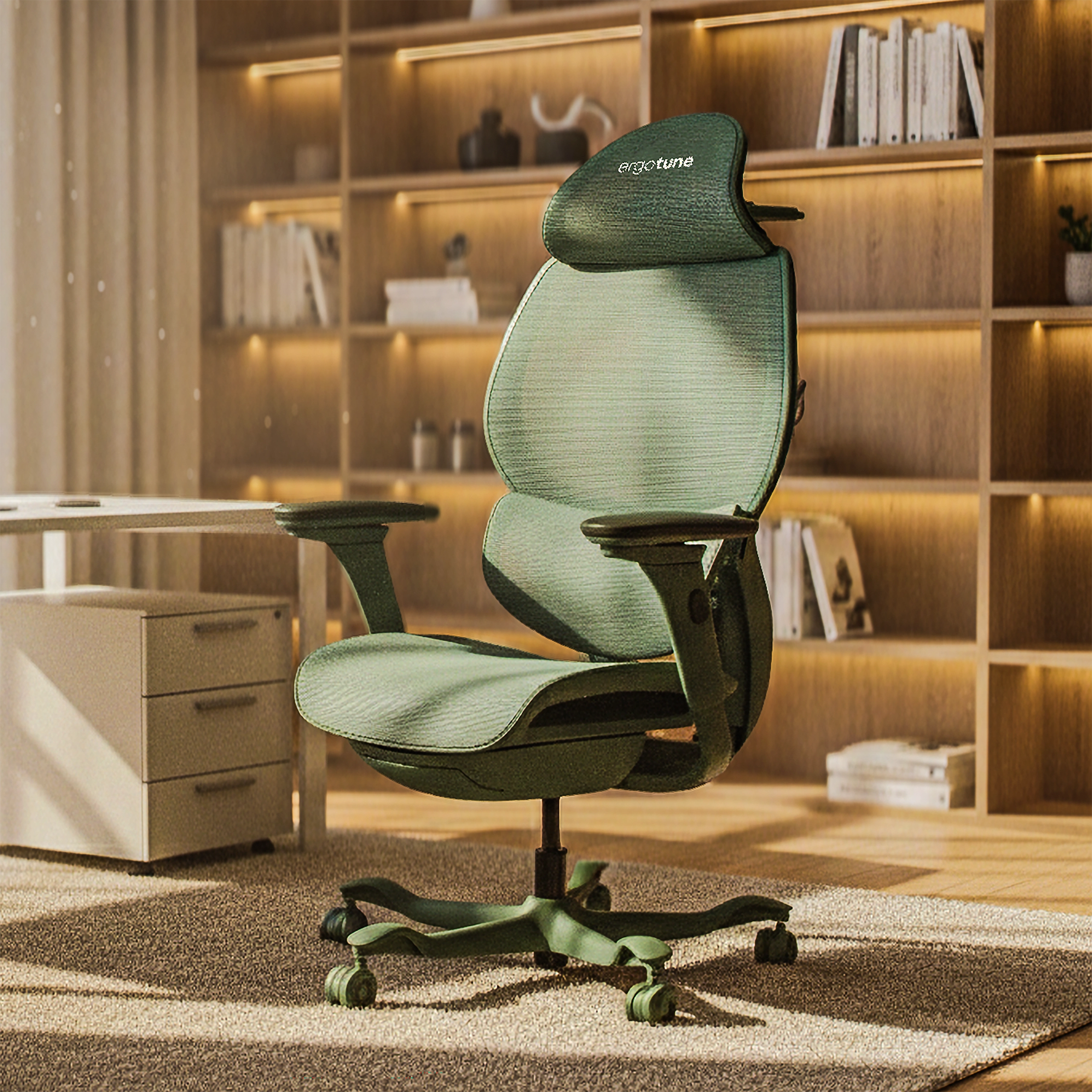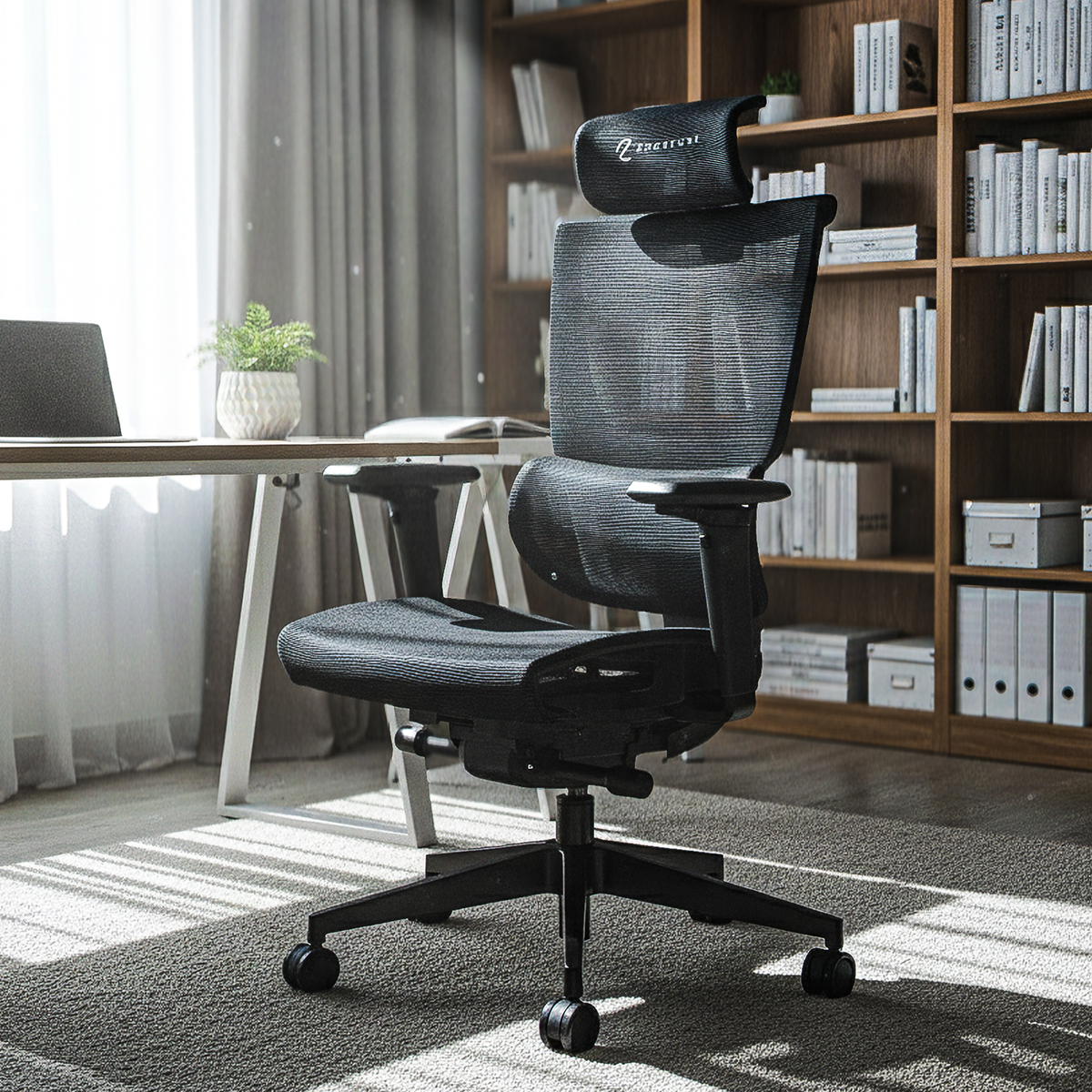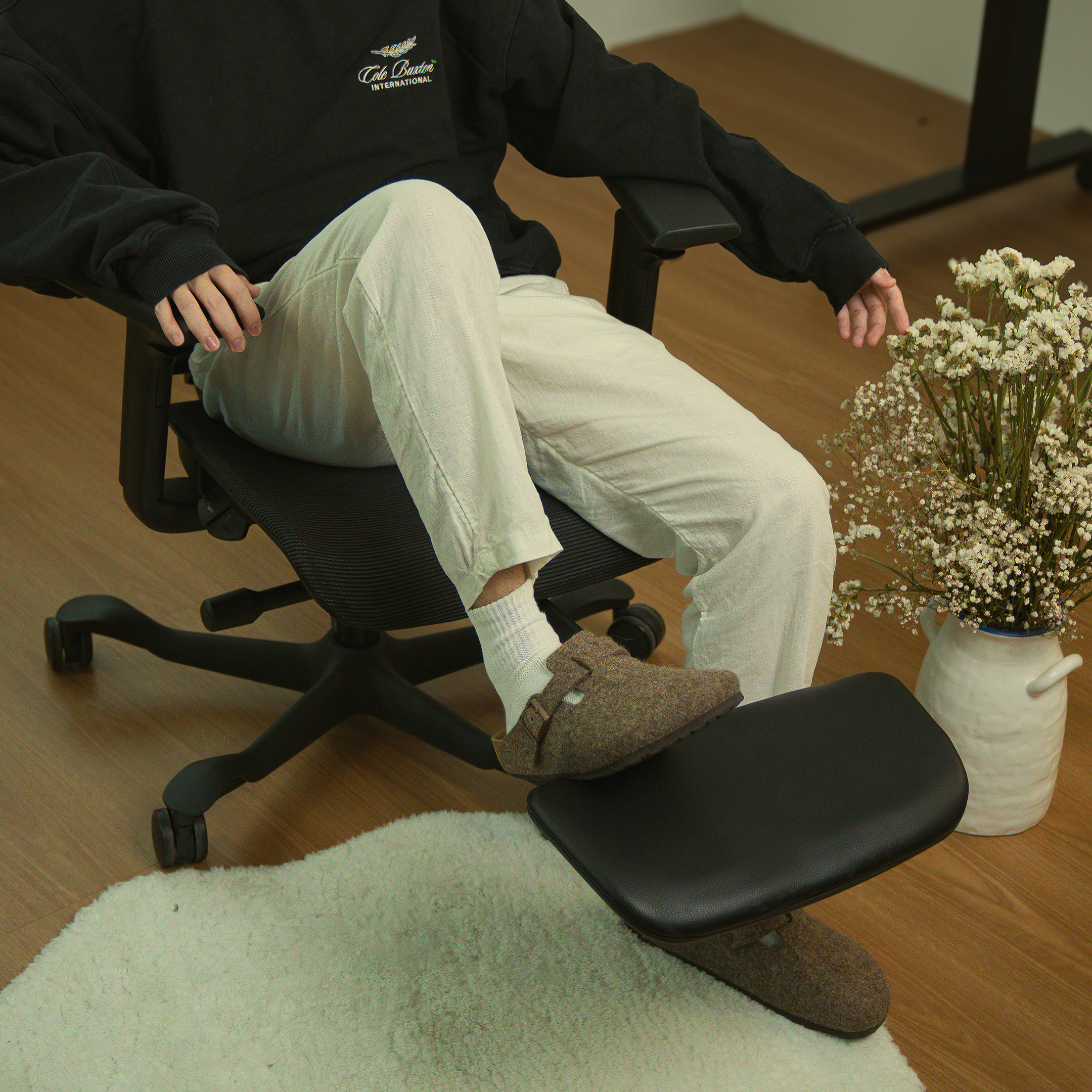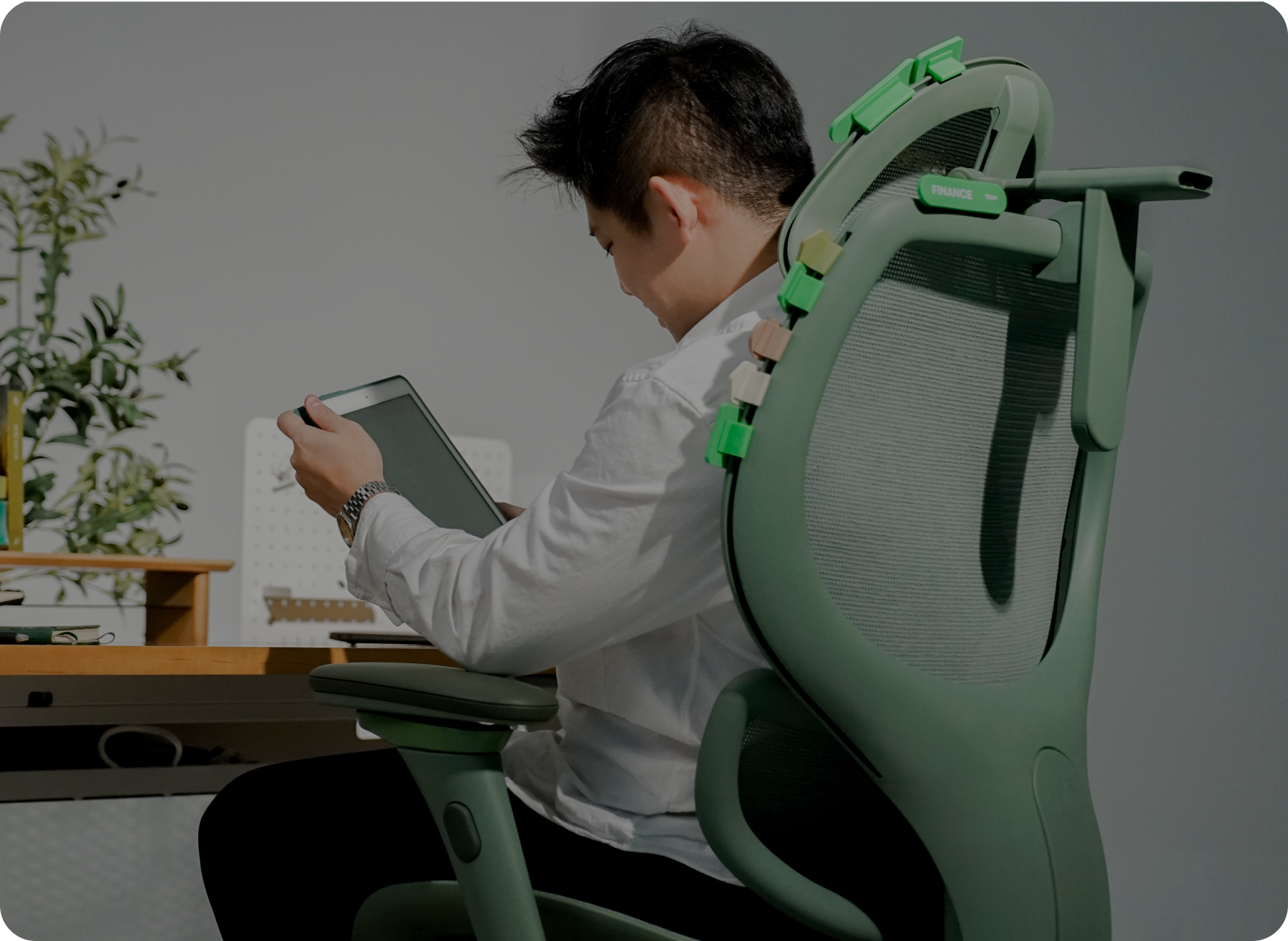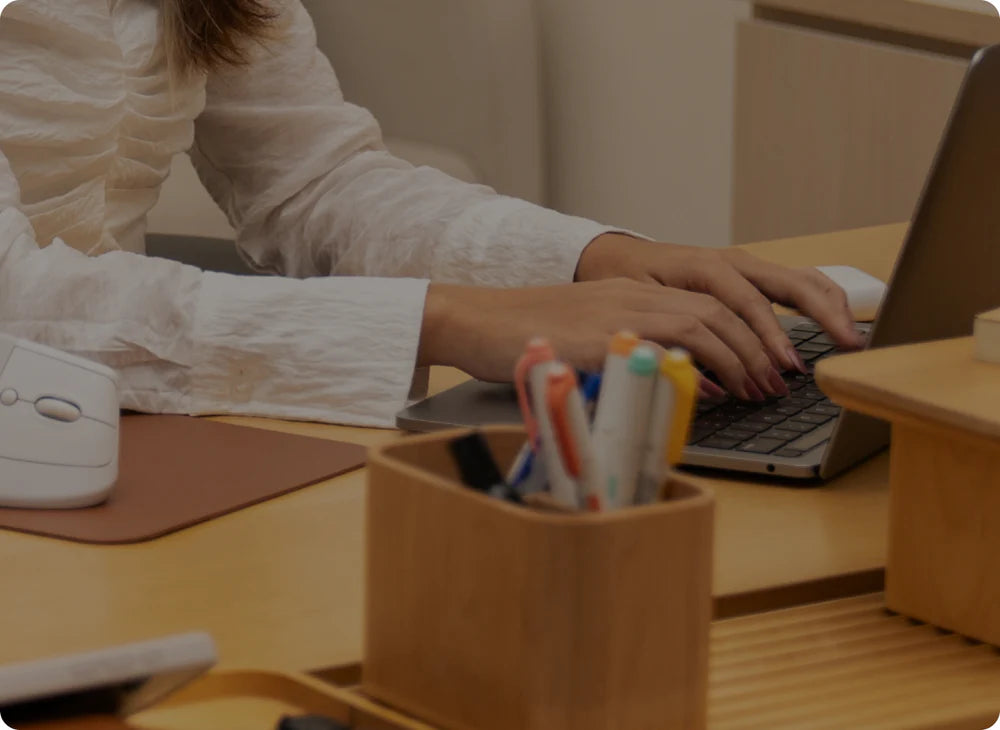
Having a bad office chair can lead to a whole host of problems. If you've spent enough time on a low-quality office chair, then you'll know exactly what we're talking about. Back pain, sore hips--the list goes on and on. And if you've been sitting on a bad office chair long enough, then you're probably at risk for developing chronic problems.
Back pain is perhaps the most common side effect of constantly sitting on a bad office chair. But, of course, that's not all there is. Hip pain is another common plight of people who sit on poor-quality office chairs--and sometimes, it's just not mild pain either. For some people, a bad office chair can even lead to serious hip injury.
In order to fully understand the value of ergonomics, we must talk about the negative consequences of sitting on a bad office chair. And in this article, we will focus on hip pain--one of the most frustrating and possibly even debilitating types of pain in the workplace.
So, Can A Bad Office Chair Cause Hip Pain?
Yes, a bad office chair can absolutely cause hip pain. This is because an office chair with poor ergonomics puts excessive pressure on your hips, which leads to pain. There are two types of hip pain, namely trochanteric bursitis and femoral acetabular impingement (FAI).
Trochanteric bursitis is a condition wherein fluids accumulate in the space between the trochanter bone (an important muscle attachment site) and the muscles surrounding it.
Femoral acetabular impingement or FAI, on the other hand, occurs when the cartilage that covers your hip joint and the upper part of your thigh bone incurs damage.
Both of these conditions are caused by overexertion, repetitive motions, and poor posture.
Developing an injury because of a bad office chair might seem implausible (after all, you're just sitting). But you have to think about the pressure that builds in certain muscles of your body if it is not properly distributed. This is what happens when you sit for long periods of time without proper posture. Any amount of excessive pressure on your joints, muscles, and bones can cause pain when left unaddressed.
With all that said, a bad office chair that does not facilitate good posture can most definitely cause hip pain, among many other problems.
How A Bad Office Chair Causes Hip Pain:
Now, you know that poor-quality office chairs can cause hip pain because they don't encourage good posture. But how exactly does this happen?
Here are the possible reasons why a bad office chair can cause hip pain:
Can't Adjust To Your Unique Body
A good office chair is not one-size-fits-all. People have varying heights, weights, limb lengths, and even neck lengths. That said, a good office chair must be able to adjust to one's unique body in order to provide proper support.
The best ergonomic office chairs feature many adjustable parts, including seat height, headrest, and seat depth. An adjustable design is imperative to facilitating proper posture while sitting, which helps prevent hip pain. For instance, you need to be able to adjust the height of your seat to ensure that your arms are at the right height in relation to your desk. Moreover, your chair must allow seat depth adjustment so that your knees won't hang from the edge of your seat, which can put undue pressure on your hips. And so on.
Without adjustability, you will be forced to sit in a way that is most comfortable for you, which is not always the proper posture. For example, if you can't adjust the height of your seat and it is too high, you will be forced to rest your feet on your tiptoes instead of your feet flat on the ground. What happens is that the weight of your legs is hanging off your hips, which will cause pressure to build up and--surprise, surprise--lead to hip pain!
No Forward Tilt Position To Take Pressure Off Hips
Most office chairs will put pressure on your hips while sitting, but a good-quality ergonomic office chair will have a tilt forward mechanism that allows you to adjust the angle of your seat. With this type of ergonomic office chair, you can tilt the front of your seat up or down. What this does is minimize pressure on your lower back, ensure proper posture, and improve blood flow to the legs and feet--which all reduce hip pain.
Doesn't Have Lumbar Support
Lumbar support is the feature of ergonomic office chairs that support the natural curve of your lower spine. It helps distribute your weight properly and promotes good posture, which are the keys to preventing hip pain.
Regular office chairs rarely have lumbar support to encourage good spinal alignment, which is why they often lead to poor posture. If you sit for long periods in an office chair without proper lumbar support, you may be straining your ligaments and spine in the process. This is the main reason why your back and hips ache after sitting for too long.
Not only that, but a lack of lumbar support can put your spine out of alignment over time, which adds more stress to your hips and knees. This is why it's so important to sit in a chair with enough lumbar back support, especially if you spend most of the day sitting behind a desk.
Pro tip: if you don't have an office chair with lumbar support, you can buy a lumbar support pillow and put it against your back while working. Better yet, take a look at this article to learn more about how you can get better lumbar support!
Other Ways To Reduce Hip Pain In Your Working Environment
Having an ergonomic office chair is not the only way to reduce and prevent hip pain. If you spend most of your day sitting, here are other ways you can minimize poor posture and avoid hip pain:
Standing Desk
Sitting all day is the most common cause of body pain in office workers. So, why not try standing while working instead? Standing is a great way to reduce pressure on your back, hips, and knees. More importantly, it can help prevent poor posture, which, in turn, prevents all sorts of sitting-related pain.
However, standing all day is not a good idea either. The key is to alternate between sitting and standing (e.g. sit for 2 hours and stand for 1) to prevent tension from building in your muscles and joints, which tends to happen whether you sit or stand for too long.
Foot Rest
If your feet don't reach the floor when you sit on your office chair, this can mean bad news for your hip joint, your knees, and your overall posture. Why? Because if your feet are not flat on the floor, the weight of your legs is hanging off your knees and hips instead of being supported by the ground. Aside from hip pain, this can also lead to knee pain.
In this case, use a footrest to ensure that your knees are about the same height as your hips. At this position, you are not putting undue tension on your hips because the weight of your legs is resting on a flat surface.
Seat Wedge
We've gone over the importance of having a forward seat tilt but, unfortunately, most office chairs can only tilt backward. If your chair does not have a forward seat tilt, don't worry--a seat wedge has a similar function as a forward seat tilt.
A seat wedge is a triangular cushion that allows you to change the angle of your body. It is commonly used by people experiencing back and hip pain to facilitate better posture and reduce discomfort.
Hip Flexor Exercises
Hip flexors are the muscles responsible for moving your lower body (e.g. kicking, walking, bending, etc.). If they are too tight--which can occur because of poor posture--your hip flexors can tear or stretch, which will lead to hip pain.
To ensure that your hip flexors are free from tension, perform regular exercises that focus on these muscles, such as knee-to-chest stretches, pigeon poses, and lunges.
Mindful Posture
Can an ergonomic office chair help posture? Yes, it can. But not being mindful of your posture can defeat the purpose of an ergonomic chair.
Always make sure that your body is in the right alignment while sitting. Sit up straight with your shoulders relaxed and your head in line with your spine. Make sure your feet are lying flat on the ground and the back of your knees are just 2 to 3 inches away from the edge of your seat. Place your arms on the armrests and ensure that they are parallel to the floor.
It's not easy to maintain proper posture while sitting for hours and hours, but it's a necessary step in avoiding hip pain--or something even worse like an injury.
Frequent Breaks
Staying in one position for too long is bound to cause hip pain at some point--whether you are sitting with proper posture or not. To avoid unnecessary hip pain from ruining your workday, take the time to stretch and walk around every few hours. If you tend to get lost in your work, set an alarm every hour or so to remind yourself to take a break.
Can A Bad Office Chair Cause Hip Pain? Wrapping Up
A bad office chair can lead to all sorts of problems that are not limited to hip pain. There's also back pain, shoulder pain, knee pain, and sometimes even internal pain like headaches. And you know what else comes with physical pain? Mental stress. If you constantly have hip pain--or any other type of pain, for that matter--it becomes difficult to focus, relax, and be productive.
Luckily, the solution is simple. Upgrading your regular office chair to an ergonomic office chair can help you prevent hip pain and other consequences of sitting on a poorly-made chair. So, not only do your workdays become pain-free, but you'll also be more productive, focused, and happier overall. A worthy investment, if you ask us! Don't delay any longer - get the best ergonomic chair in Australia.


